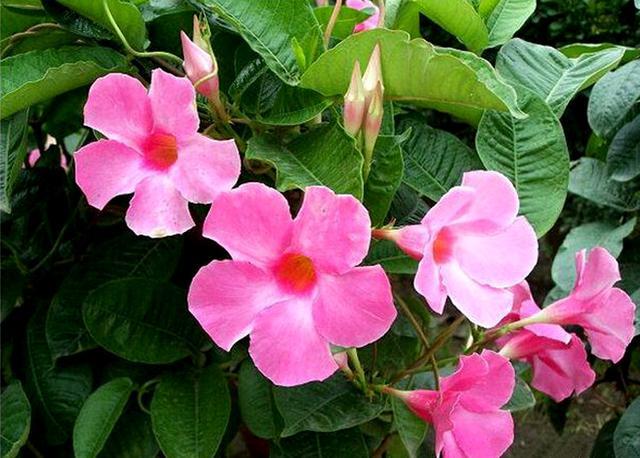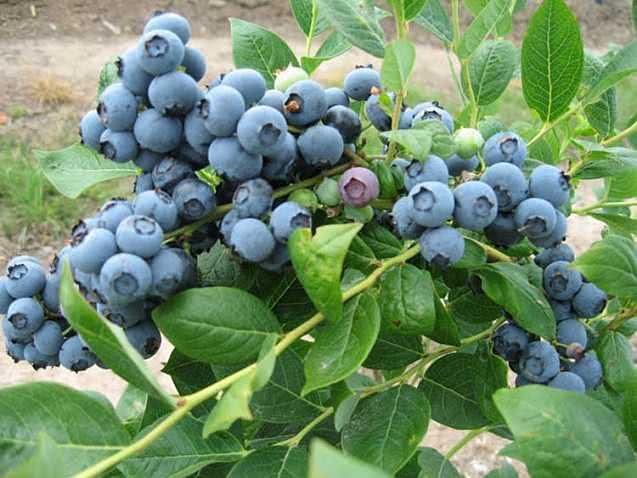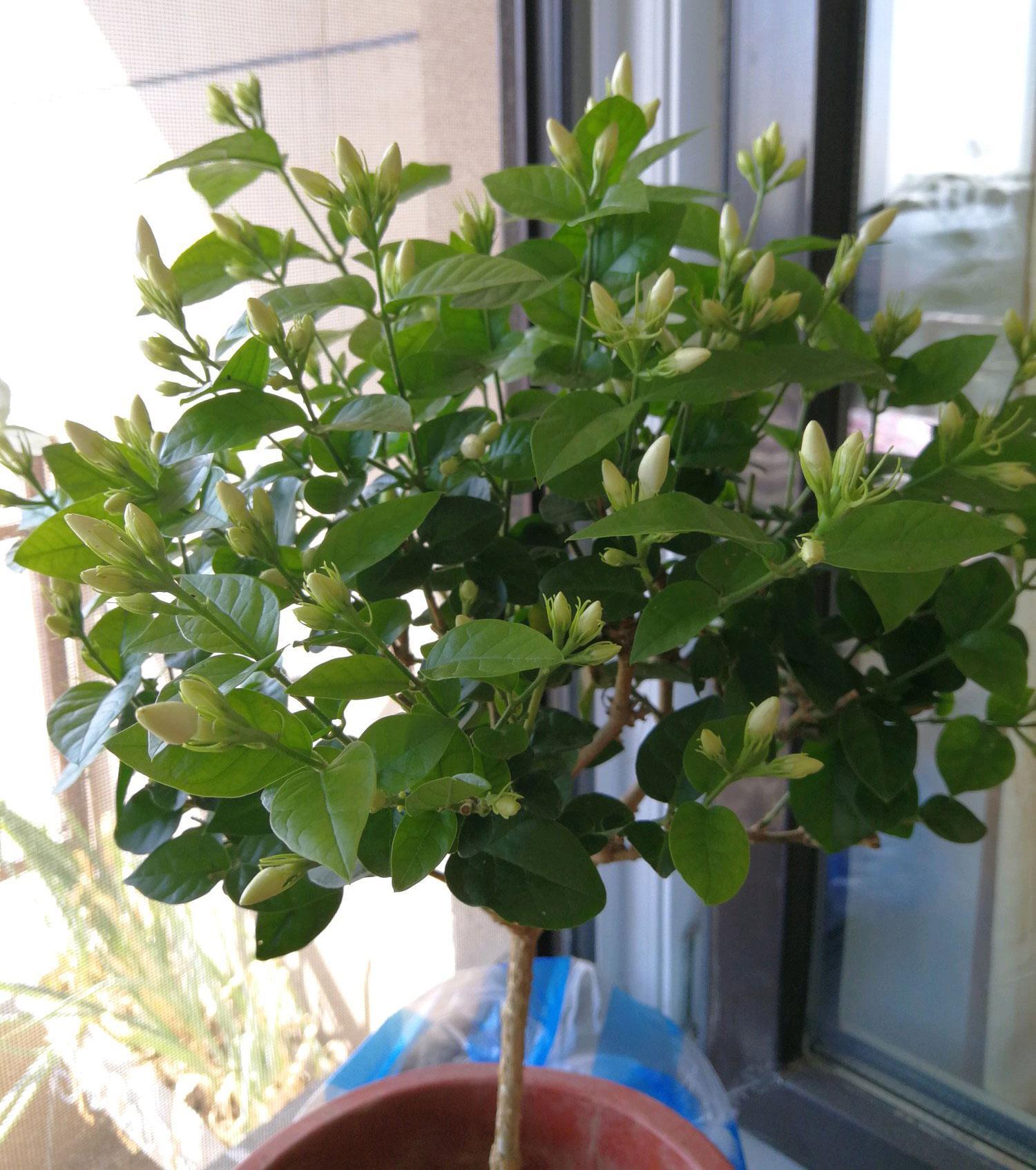Full of tenacity, strong ornamental, if you want fragrance in the courtyard, then raise fragrant vines.

Piaoxiang vine, also known as Wencheng, as a kind of vine, its tough branches are synonymous with it. It is usually suitable for cultivation on the balcony or climbing on the fence and scaffolding of the courtyard, which is very ornamental. Its flowering has its own characteristics, usually the number of flowers is far more than the number of branches and leaves, and with the end of the season, the color will be darker and darker, from light pink to deep red.
First, the planting of fragrant vines
Cutting propagation is the most commonly used method for the cultivation of Tripterygium. Cuttings are usually carried out in spring or early summer, cutting a certain number of semi-lignified branches from the growing and sturdy vines as cutting materials, while retaining the bud holes at the branch nodes. Select the flowerpot of the right size as the container of the fragrant vine, when cutting, in order to ensure the smooth rooting of the branches, there should be a certain distance between the branches, which is generally about 3-5 cm. After cutting, the time for plants to take root is longer, usually between one and a half months, during which there is no need for fertilization and other measures in addition to proper watering of plants. After one to two weeks after the plants take root and sprout smoothly, the plants can enter normal management. If you feel that the rooting time is too long, you can add a small amount of dipping powder to promote its rooting speed.
Second, the maintenance of fragrant vines
1. Light condition
Piaoxiang vine is suitable for growing under the condition of sufficient light, so during the growth period of the plant, the plant must be placed in a good light environment, generally maintaining about eight hours of sunshine every day. If the summer weather is hot, the fragrant vine must be shaded, the strong light for a long time will lead to the withering and yellowing of the branches and leaves, thus affecting its flowering process, and when the situation is serious, it will also lead to the early withering of flowers.
two。 Soil condition
Because Piaoxiang vine has strong adaptability to the environment, it does not need too many requirements in the selection of its cultivation soil. In general, humus or sandy soil with good fertile degree and good looseness can be used. If the basin soil is self-configured, it is best to add an appropriate amount of foot-based fertilizer to plant cutting after a certain amount of disinfection, which is conducive to plant growth and reduce the possibility of disease in its growth process.
3. Watering and fertilization
The watering of Piaoxiang vine must be moderate, if too little watering leads to the drying of the basin soil, it will affect the absorption of nutrients by the plant, and then the plant can not absorb enough water, so it is possible for the plant to grow yellow leaves or branches. Excessive watering is easy to cause stagnant water in the basin soil, which leads to root rot or root rot, which has a great impact on plant flowering. Especially in autumn and winter, plants should be watered less and the soil should be kept in a semi-dry state. After entering the early spring, the plants can slowly return to normal watering.
On the other hand, the spring and summer seasons every year are the peak season for the growth of fragrant vines, so fertilization is a little more than usual, usually every 7-10 days. If you apply fertilizer in spring, you should add more nitrogen and phosphorus fertilizer, while in summer, you should add more phosphorus and potassium fertilizer, which should be diluted with clear water to ensure that the plant can be absorbed smoothly and avoid burns at the same time.
4. Pruning
The main purpose of pruning is: first, to make the appearance of the plant more beautiful; second, to ensure that the plant blossoms smoothly next time. Pruning can be divided into two stages, which can be carried out in spring, mainly cutting off disordered branches, weak branches and overgrown branches, while the second pruning is mainly aimed at the residual flowers, residual branches and the shape of the plant after the flower fade.
- Prev

Home-grown blueberries are really good. Pay attention to the 4: 00 bang.
Blueberry alias also known as Dianguo, it has a very rich nutritional value, especially for people's eyes on the great help, for people who often face the computer or often concentrate on work, regular consumption of blueberries can.
- Next

Four tips for raising jasmine flowers blossom until late autumn
Jasmine, white flowers, light aroma, is a famous variety of diligent flowers, if properly maintained, the florescence from the end of spring to late autumn, blooming throughout the summer. This is also the reason why many flower lovers love jasmine and plant it at home.
Related
- Wuhan Hospital Iron Tree Blooming Result Was Instantly Frightened by the Gardener Master
- Which variety of camellia is the most fragrant and best? Which one do you like best?
- What is the small blue coat, the breeding methods and matters needing attention of the succulent plant
- Dormancy time and maintenance management of succulent plants during dormancy
- Minas succulent how to raise, Minas succulent plant pictures
- What are the varieties of winter succulent plants
- How to raise succulent plants in twelve rolls? let's take a look at some experience of breeding twelve rolls.
- Attention should be paid to water control for succulent plants during dormant period (winter and summer)
- Watering experience of twelve rolls of succulent plants
- Techniques for fertilizing succulent plants. An article will let you know how to fertilize succulent plants.

